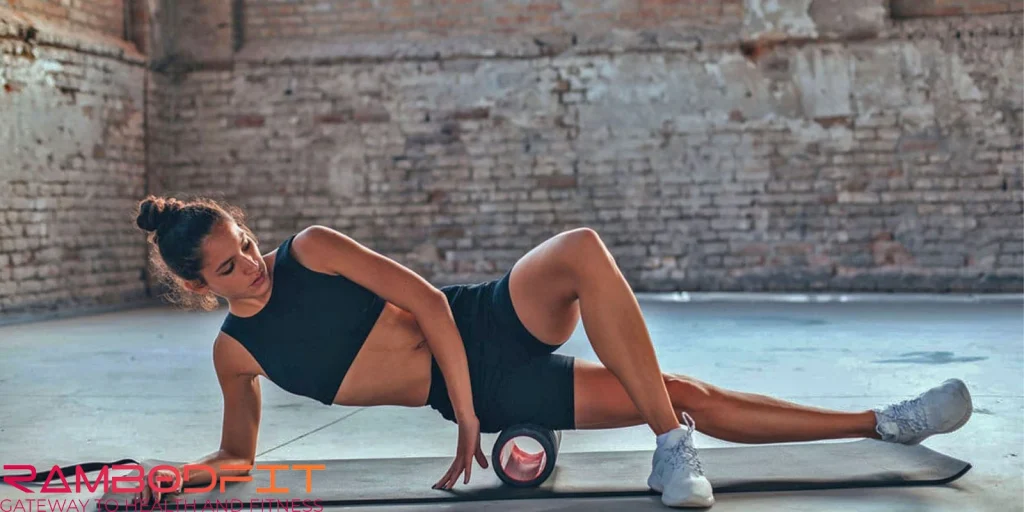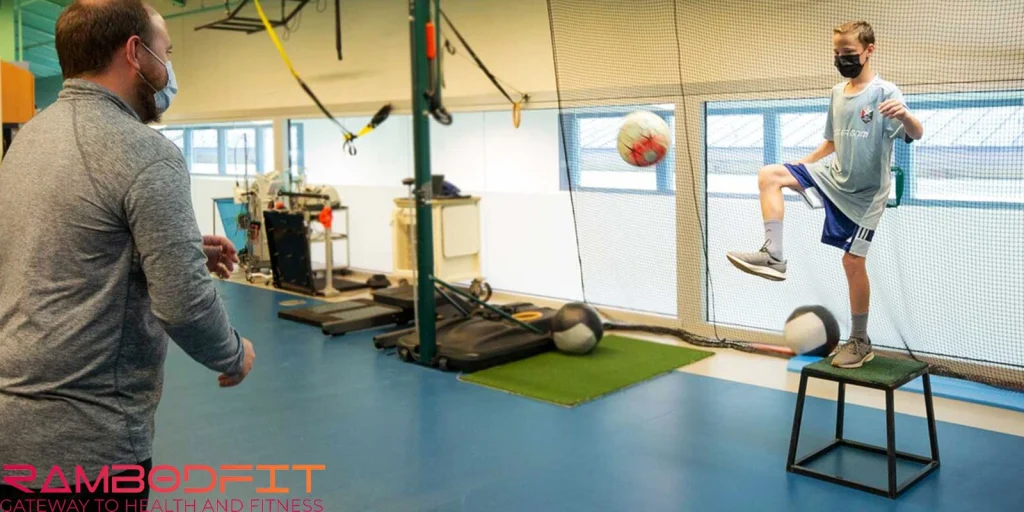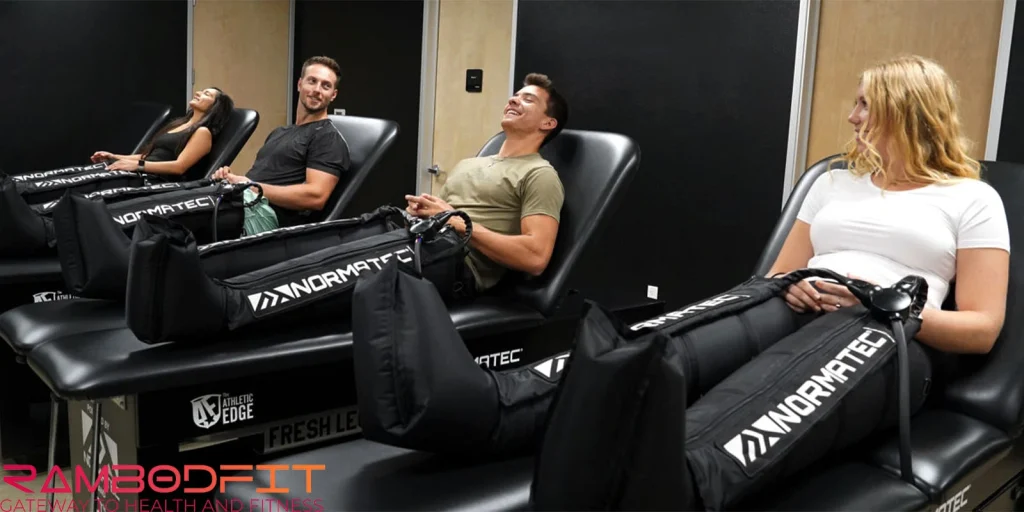


Nowadays teenagers are active in many kinds of sports and physical activities which is good news, however, knowing how to do a proper post-workout recovery for teens is quite important and necessary. If teenagers don’t get a good recovery after their exercises, they may get into trouble and face injuries that may not be fixed easily.
Whether they are professionals in sports or just a gym and exercise fan, proper post-workout recovery for teens is essential. Recovery ensures that your body adapts to the physical stress of exercise, reduces the risk of injury, and optimizes performance.
In this guide on RambodFit, we’ll explore the science of post-workout recovery for teens and provide evidence-based tips that are both practical and easy to follow.

Recovery is the process by which your body tries to adapt itself to the stress and damage caused by exercise. This includes rebuilding muscle fibers, replenishing energy stores, and reducing inflammation. Inflammation is one of the most important factors for fatigue and diseases which should be recovered properly in the body.
For teenagers, who are still growing and developing, post-workout recovery for teens is even more crucial as their bodies need additional resources to support growth alongside exercise demands.
Key benefits of proper recovery:
1. Improved Performance: Adequate recovery enhances strength, endurance, and agility over time.
2. Reduced Injury Risk: Pre and post-workout recovery for teens helps prevent overuse injuries like tendonitis or stress fractures.
3. Better Growth and Development: Exercise stimulates growth hormone production, and post-workout recovery for teens ensures these benefits are maximized.
Teenagers experience unique physiological factors that influence their recovery:
• Higher Growth Hormone Levels: During adolescence, the body produces more growth hormone, which aids in tissue repair and muscle growth.
• Active Nervous Systems: Teens often recover faster between sets of exercise compared to adults, thanks to their more efficient nervous systems and also their most efficient anaerobic energy system.
• Increased Sleep Needs: Sleep is vital for recovery, and teenagers require 8-10 hours per night to support both exercise and development.
Research published in Frontiers in Physiology (2018) highlights the importance of balancing training and recovery in adolescent athletes, emphasizing the role of nutrition, hydration, and rest.
1. Rehydrate to Replace Lost Fluids
Sweating during exercise leads to fluid and electrolyte loss, which can impair recovery if not replenished. Proper hydration:
2. Refuel with Nutrient-Dense Foods
After a workout, your muscles need fuel to recover. The key macronutrients are:
Example Post-Workout Meals:
1. Grilled chicken with quinoa and steamed vegetables.
2. A smoothie made with whey protein, banana, spinach, and almond butter.
3. A turkey and avocado sandwich on whole-grain bread.
3. Prioritize Sleep for Full Recovery
Sleep is the most powerful recovery tool, especially for teenagers. During deep sleep, the body releases growth hormone, which is essential for muscle repair and development.
Sleep Tips for Active Teens:
A study in the Journal of Clinical Sleep Medicine (2017) found that teens who get sufficient sleep recover faster from physical activity and experience improved athletic performance.

4. Stretch and Cool Down Properly
Post-workout stretching and cooling down help reduce muscle soreness and improve flexibility.
Effective Cool-Down Routine:
Research published in Sports Medicine (2019) suggests that stretching after exercise reduces delayed onset muscle soreness (DOMS) and improves joint range of motion.
5. Use Active Recovery on Rest Days
Active recovery involves engaging in light, low-intensity activities to promote blood flow and reduce stiffness.
Examples of Active Recovery Activities:
A study in the European Journal of Applied Physiology (2018) showed that active recovery accelerates the removal of lactic acid and reduces soreness compared to complete rest.
6. Manage Inflammation with Proper Nutrition
Exercise-induced inflammation is a natural part of recovery, but chronic inflammation can delay progress. Foods rich in antioxidants and anti-inflammatory compounds can help.
Anti-Inflammatory Foods:
Avoid processed foods and excessive sugar, which can increase inflammation.
7. Listen to Your Body
Recovery needs vary from person to person. Teens should pay attention to signs that their body might need extra rest, such as:
If these symptoms occur, consider adjusting workout intensity, incorporating additional rest days, or consulting a coach or healthcare professional.
1. Skipping Post-Workout Nutrition:
Eating after exercise is crucial for replenishing energy stores and rebuilding muscle. Don’t wait more than 1-2 hours to eat.
2. Not Paying Attention To Hydration:
Even mild dehydration can impair recovery and performance. Drink water throughout the day, not just during workouts. Around 3 to 5 liters per day is suggested.
3. Overtraining:
Too much exercise without sufficient rest can lead to burnout and injuries. Plan at least 1-2 rest days per week.
4. Ignoring Sleep:
Sacrificing sleep for late-night activities or screen time can hinder recovery and athletic performance.

Sample Of Post-Workout Recovery For Teens:
Monday (Workout Day):
Tuesday (Active Recovery Day):
Wednesday (Workout Day):
Thursday (Rest Day):
Friday (Workout Day):
Saturday (Active Recovery):
Post-workout recovery for teens is just as important as the workout itself, especially for teenagers who are involved in professional athletic performance. By prioritizing hydration, nutrition, sleep, and active recovery, you’ll set yourself up for success in sports and fitness while minimizing the risk of injuries.
There is a saying in sports culture which is: Eat, sleep, train, repeat. This is the conclusion of this whole article. Try to keep it simple for yourself, involve knowledge in your lifestyle, and listen to your body.
For more information about exercise and nutrition science, check the links below, and don’t hesitate to ask us questions. We are here to help you achieve the best performance and lifestyle so that you can enjoy your life.
Teens should consider at least one full rest day per week. Overtraining can lead to injuries, exhaustion, and weakened immune function which can disrupt the function of teens during physical activities.
It is also important to do post-workout recovery for teens to somehow create a balance between strength, power, and flexibility.
An important post-workout recovery for teens is eating meals within 30-60 minutes after exercising. This window is when the body is most efficient at absorbing nutrients for muscle recovery and energy replenishment.
If a full meal isn’t possible, a snack with protein and carbohydrates like a protein shake, a banana with peanut butter, or Greek yogurt with granola can be a good option.